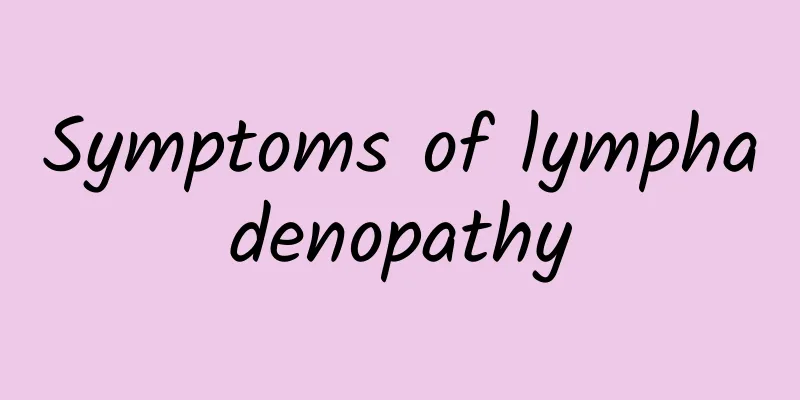What is low blood pressure?

|
Speaking of low blood pressure, relatively speaking, some friends may be more familiar with high blood pressure, but low blood pressure is also a very common disease in our lives. Some friends may think that low blood pressure is not as harmful as high blood pressure, but in fact, if low blood pressure is not paid attention to, it will also pose a threat to our lives and health. Let’s take a look at the conditions of low blood pressure. Hypotension is just a general term. Hypotension is divided into many conditions. Our patients must clearly distinguish which condition they belong to. In this way, they can better cooperate with doctors and strive to recover health as soon as possible. There are some symptoms of low blood pressure. Let’s take a look at them. 1. Acute hypotension Acute hypotension refers to a sudden and significant drop in the patient's blood pressure from a normal or high level. Clinically, it is often caused by ischemia of important organs such as the brain, heart, and kidneys, and symptoms such as dizziness, black eyes, weak limbs, cold sweats, palpitations, and oliguria. Severe cases may manifest as syncope or shock. 2. Chronic hypotension Chronic hypotension refers to a state in which blood pressure is persistently below the normal range. (1) Constitutional hypotension is generally believed to be related to heredity and weak constitution. It is more common in women and the elderly aged 20 to 50. Mild cases may have no symptoms, while severe cases may cause mental fatigue, dizziness, headache, and even fainting. It is more obvious in summer when the temperature is higher. (2) Orthostatic hypotension: Hypotension in some patients is related to changes in body position (especially upright position), which is called orthostatic hypotension. Postural hypotension is defined as a decrease in systolic blood pressure >20 mmHg or diastolic blood pressure >10 mmHg within 3 minutes of changing body position to an upright position, accompanied by symptoms of hypoperfusion, including dizziness, lightheadedness, blurred vision, fatigue, nausea, cognitive impairment, palpitations, and neck and back pain. Elderly people with isolated systolic hypertension accompanied by diabetes, hypovolemia, or the use of diuretics, vasodilators, or psychotropic drugs are prone to orthostatic hypotension. (3) Secondary hypotension Certain diseases or drugs can cause hypotension, such as syringomyelia, severe aortic stenosis, mitral stenosis, chronic constrictive pericarditis, idiopathic or hypertrophic cardiomyopathy, hemodialysis patients and chronic malnutrition, as well as taking antihypertensive drugs and antidepressants. Hypotension caused by these diseases can also cause symptoms of low perfusion such as dizziness and lightheadedness. After reading the above introduction, I believe everyone should now have some understanding of the disease of hypotension. These symptoms of hypotension are relatively common in our lives. Our patient friends can refer to the detailed introduction above to understand which symptom they have. In daily life, we should pay attention to our living habits and actively go to the hospital to receive treatment from a doctor. |
Recommend
Dandelion Side Effects and Contraindications
As a traditional Chinese medicinal material that ...
Causes of Hyperuricemia
Hyperuricemia is a symptom that is not very commo...
Why is chrysanthemum bitter in water?
Chrysanthemum tea is a kind of scented tea that m...
The difference between liver palm and normal palm
The appearance of liver palms is mostly closely r...
Girls have fear of contact with the opposite sex
Everyone loves beauty, and similarly, every girl ...
Excessive oil secretion
Every summer, the human body's skin sebum sec...
A review of the treatment methods for chronic glomerulonephritis
Patients with chronic glomerulonephritis must pay...
Early symptoms of herpes simplex
Herpes zoster, also known as shingles, is a relat...
What's the best way to treat a stuffy nose?
We breathe mainly through the mouth and nose, but...
You can tell whether you are healthy by looking at the soles of your shoes
Did you know? The wear and tear of the soles of y...
What causes thumb numbness?
In life, our fingers can help us do many things, ...
Boboding is a wild vegetable. What diseases can it treat?
Dandelion is the dandelion flower, which has many...
The role and efficacy of Chinese medicine Poria cocos
I think everyone is familiar with the term coix s...
What are the benefits of drinking Pu'er tea regularly?
People have been growing, tasting and appreciatin...
The pimples on my face have become festering
The condition of acne reflects the health of inte...









